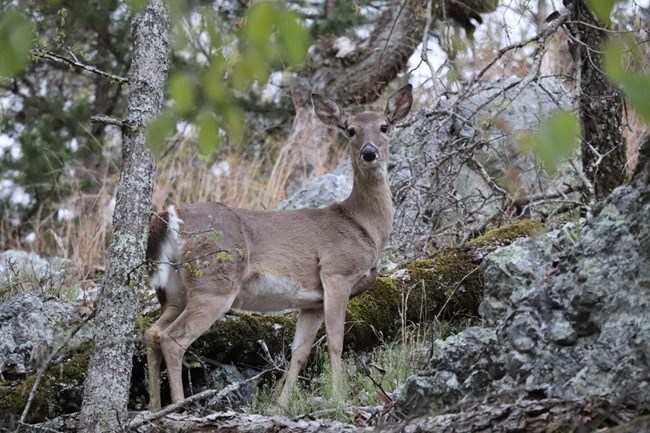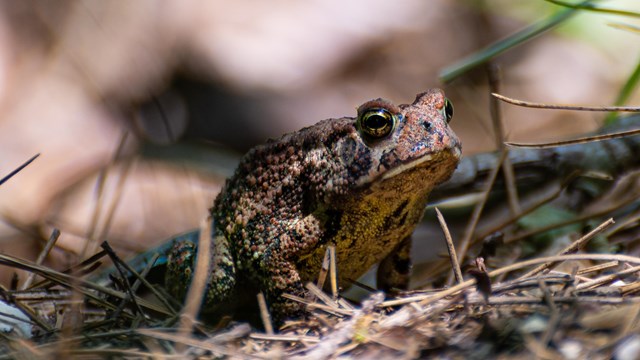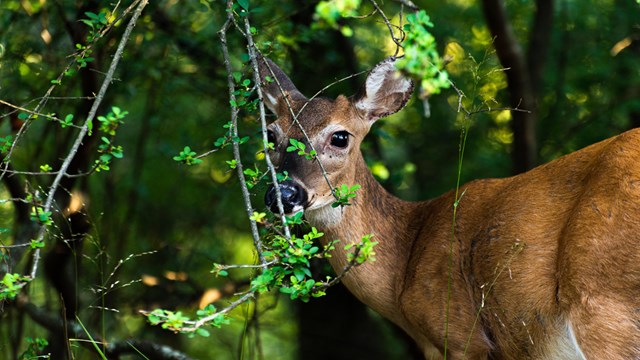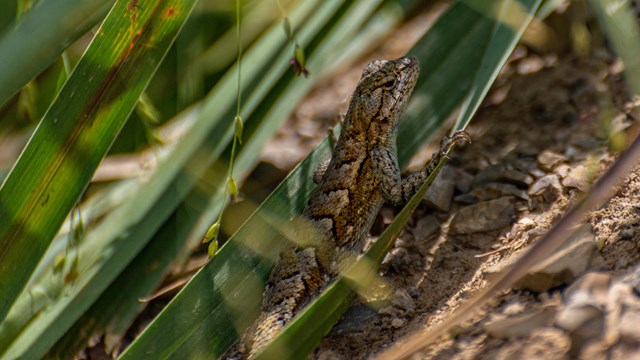
HOSP photo by Mitch Smith Surrounded by the Ouachita National Forest and the City of Hot Springs, Hot Springs National Park is a critical sanctuary for a variety of animals. This oasis of dense forest on rocky mountain slopes with their novaculite outcrops and lush creek valleys make a perfect home for many different species. Wildlife ViewingViewing wildlife in the Hot Springs can be challenging because most of the park is covered by dense forest and within the boundaries of a city. Open trail areas offer some of the best opportunities to see animals like the white-tailed deer. Since many animals are most active at night, the best time to view wildlife occurs during early morning and evening hours. In the wintertime, wildlife is more visible because deciduous trees have lost their leaves. It's also a good idea to carry binoculars. And don't forget to scan the trees, many animals spend their days among the branches. Wildlife Safety
The safety of these animals, as well as your safety, depends on everyone using good judgment and by setting a good example. By following these simple guidelines, you can help protect Hot Springs National Parks wildlife. Learn even more ways to #RecreateResponsibly. Hot Springs National Park Species ListVisit NPSpecies for more comprehensive information and advanced search capability. 
Amphibians
Amphibians are a type of animal that spends one or more stages of life in the water. They include frogs, toads, and salamanders. 
Birds
Hot Springs National Park supports a variety of song birds, wild turkey, raptors and other birds. Birding is possible all year long. 
Insects
Insects, spiders, and bugs make up the dominant form of life in the park. As the weather changes, so do our insect populations. Learn more. 
Mammals
Hot Springs National Park is home to a diverse range of mammalian inhabitants, which range tiny chipmunks to 400 pound black bears. 
Reptiles
Reptiles are cold- blooded, air-breathing vertebrates covered in special skin made up of scales, bony plates, or a combination of both. 
Research & Science
Learn more about the research permitting process and responsibilities at Hot Springs National Park. |
Last updated: February 24, 2025
